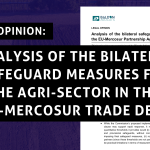
- Disappointing level of ambition – failure to draw a strict and reliable trajectory
- ESR agreement is not in in line with 1.5°C goal and the 50% reductions needed
Last night (08/11), the European Parliament, Council and Commission concluded the trilogue process on the Effort Sharing Regulation (ESR), which sets national emission reduction targets in the ESR sectors: buildings, road transport, agriculture and waste until 2030.
With a big push to come to an agreement right at the beginning of COP27 climate talks, heading towards the lowest common denominator, the Effort Sharing Regulation leaves big doors open for countries to use “flexibilities” – claiming emission reductions that happened in the past, in other countries, in other sectors – instead of real emission cuts.
Unfortunately most of the proposals from the European Parliament, such as the restriction of flexibilities, a more ambitious linear trajectory of reductions, including a strong provision on access to justice and secure binding national targets after 2030, that would have improved the Commission’s initial 2021 proposal, have fallen by the wayside.
There is a slight improvement of the Commission’s proposed trajectory and limiting borrowing from future allowances resulting in a slightly tighter emission budget. A good move was that the new “additional” Land Use, Land-Use Change and Forestry (LULUCF) reserve (proposed by the Commission using LULUCF credits which laggard countries may have tapped into to comply with their 2030 targets) was deleted.
But the list of improvements is very short, we are left with a target of 40% emissions reduction by 2030 (up from 30%) in ESR sectors and in the end (if countries use all the available flexibilities) the agreement might deliver merely half of the amount of emission reductions in reality than on paper and the compliance rules are weak. According to CAN Europe, the EU should achieve at least 50% emission reductions by 2030, compared to 2005 levels to do its fair share in reaching the Paris Agreement goal.
What’s next? Trilogue deliberations continue for all of the legal files which are part of the Fit for 55 package including, the Land Use, Land-Use Change (LULUCF) and Forestry and Emissions Trading System (ETS) files. LULUCF is expected to conclude tomorrow 10/11 – we will share a reaction and if you would like any background information or an interview with our policy experts, please don’t hesitate to get in touch.
CAN Europe positions on the ETS, ESR and LULUCF.
CONTACT: Rachel Brabbins, Communications Coordinator: rachel.brabbins@caneurope.org +447498 977 935



